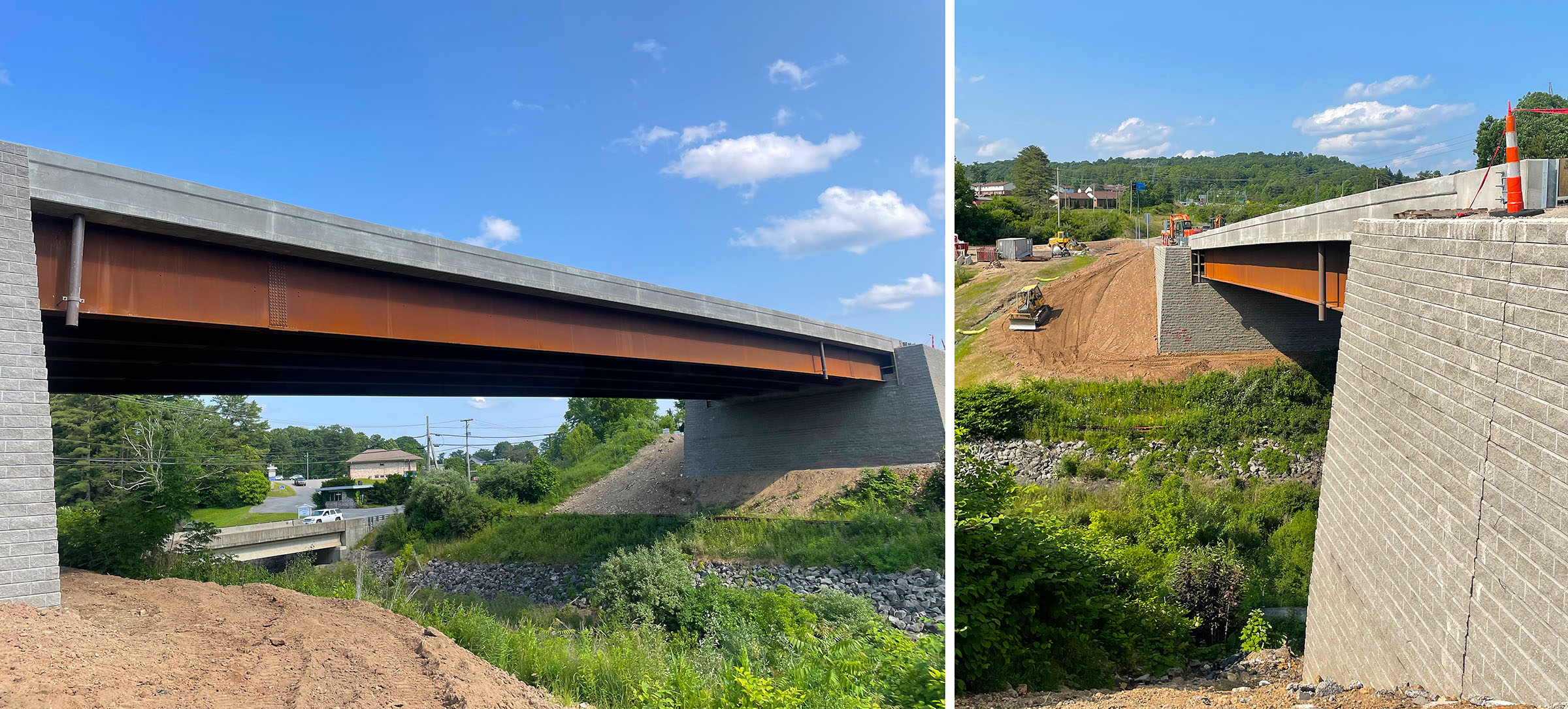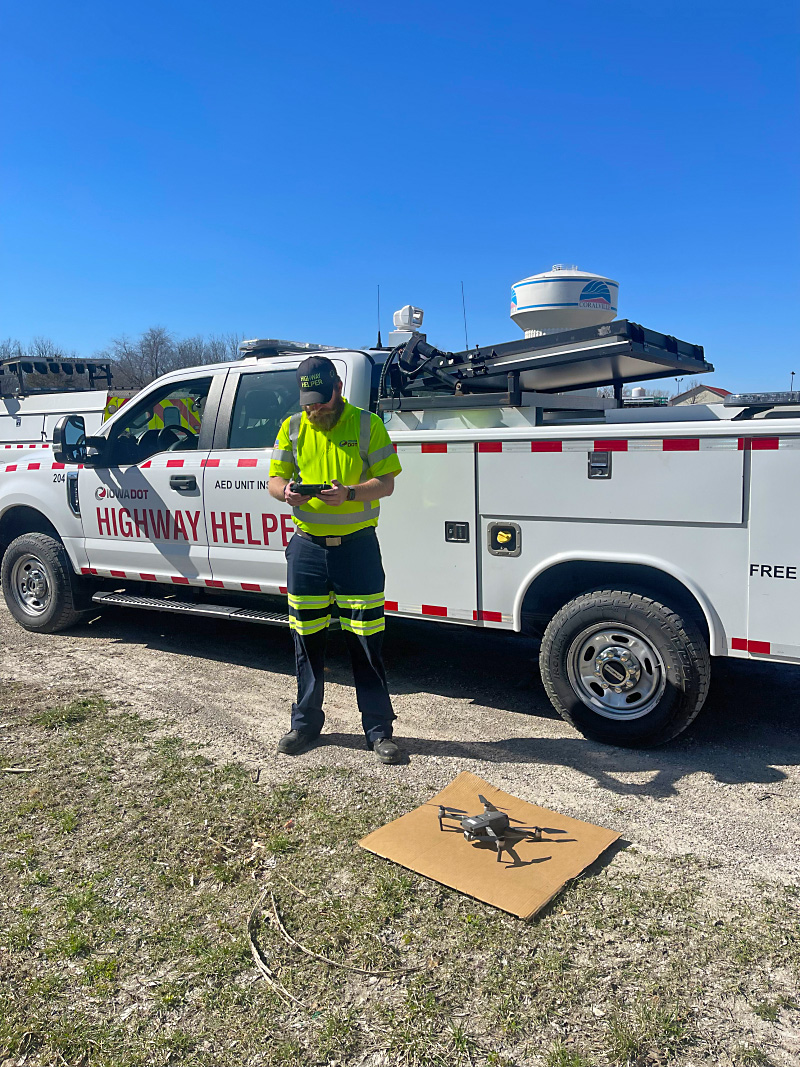
States Innovate!
West Virginia Raises the Bar with New GRS-IBS Bridge Project
The West Virginia Department of Transportation’s Division of Highways is using the geosynthetic reinforced soil-integrated bridge system (GRS-IBS) on a 190-foot span, which, according to the agency, makes it the longest spanned bridge of this type of abutment construction known to date. GRS-IBS is an innovative method that reduces bridge construction time and cost. GRS-IBS projects can be built in weeks instead of months due to the ease of construction and the use of readily available materials and equipment. The reduced construction schedule also translates into less exposure around work zones, improving safety.

West Virginia used the geosynthetic reinforced soil-integrated bridge system (GRS-IBS) on a 190-foot span.
Credit: West Virginia Division of HighwaysNorth Carolina Improves Decades-Old Pavement with TOPS
The North Carolina Department of Transportation (NCDOT) used targeted overlay pavement solutions (TOPS) to rehabilitate segments of pavement constructed as early as 1960 along Interstate 85. One of the challenges was how to address existing asphalt patches on the roadway. The solution included leaving the asphalt patches in place, except where there was severe and apparent distress, and using a concrete over concrete unbonded (COC-U) overlay. The resulting benefit to using COC-U is that it can often address more problems in the pavement with less concern for distresses, such as cracking of the existing pavement reflecting through to the new overlay. Read more about NCDOT’s use of COC-U in the FHWA’s TOPS news bulletin.
South Dakota Accelerates Deployment of e-Ticketing
The South Dakota Department of Transportation (SDDOT) piloted e-Ticketing on several projects in 2020 and 2021 that showed wireless fleet management systems and electronic ticket capture software can work together to generate and transmit weight tickets. These tools were also able to track trucks during transport and record the point of hot-mix asphalt placement on the project. Specifics of this e-Ticketing provision are included in SDDOT’ Supplemental Specification. With the new e-Ticketing specification, contractors have an option of providing printed tickets or e-Tickets at no additional cost to the contract. For the projects in 2022 where e-Ticketing was an option, contractors chose to use e-Ticketing instead of printed tickets. Read more about SDDOT’s success with e-Ticketing in FHWA’s Innovation in Project Delivery news bulletin.

The Iowa DOT is testing unmanned aerial systems to boost traffic incident management.
Credit: Used with permission from Iowa Department of TransportationIowa Aims to Use UAS to Boost Traffic Incident Management
The Iowa Department of Transportation (DOT) is testing the use of unmanned aerial systems (UAS) to help get traffic incidents cleared more quickly. The agency reported in a news release that its Traffic Management Center staff already use live video feeds from stationary cameras to assess incidents and relay information to responders, and employing UAS will help get a camera out to areas that do not have the stationary cameras. The drone being testing also has the capability to stream live video and take high-resolution still photographs that can be captured and saved for review to improve traffic incident management principles.
The Utah DOT completed one of its longest bridge slides to date while replacing a bridge over Interstate 80 in Salt Lake City.
Credit: Utah Department of TransportationUtah Continues Accelerating Bridge Construction
The Utah Department of Transportation (UDOT) is using slide-in bridge construction, an accelerated bridge construction technique, for its I-80 & I-215 Renewed project. Crews demolished an existing bridge over Interstate 80 in Salt Lake City in April and slid in the new bridge, which was constructed next to the old one, into place the next day, reducing delays and traffic restrictions for drivers. The contractor slid the new bridge approximately 110 feet, which UDOT stated in an agency news release is one of the longest bridge slides performed to date in the State. UDOT is a pioneer in slide-in bridge construction, and UDOT staff participated as part of the innovation deployment team during Every Day Counts round two (EDC-2). One of the resources UDOT helped produce during EDC-2 is the Slide-In Bridge Construction Implementation Guide.
Notice: The U.S. Government does not endorse products or manufacturers. Trademarks or manufacturers’ names appear in this article only because they are considered essential to the objective of the document.
Recommended Citation: U.S. Department of Transportation, Federal Highway Administration - Washington, DC (2023) Innovator Newsletter, July/August 2023, Volume 17 (97). https://doi.org/10.21949/1521753
- Cover
- An Open-Ended Approach to Meeting Design-Build DBE Goals
- EDC Legacy: Capturing the Value Created by Transportation
- Missouri Accelerates Market Readiness for Work Zone Innovations
- Innovation and Impact
- States Innovate
- STIC Showcase Features Homegrown Innovations
- EDC-7 Baseline Report Sets Goals for Seven Innovations
- About Innovator



